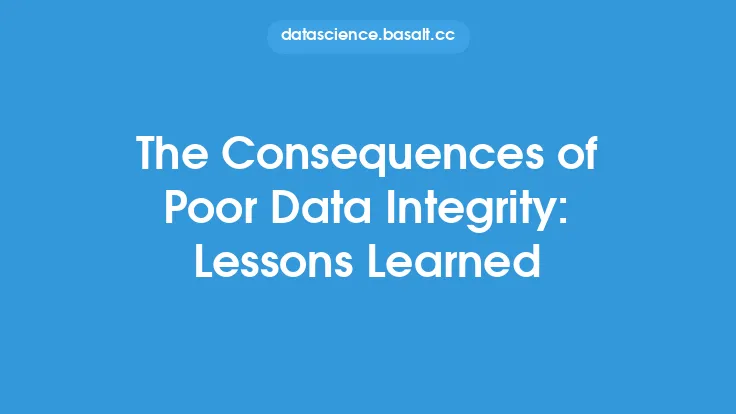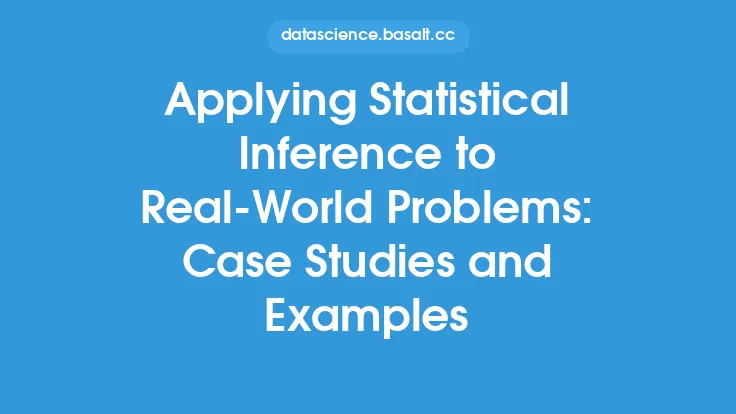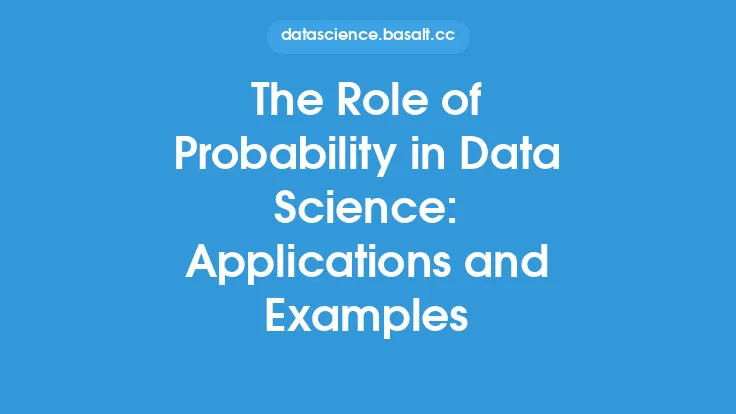In today's data-driven world, the importance of accurate data cannot be overstated. With the exponential growth of data being generated and collected, the potential for errors and inaccuracies has also increased. Inaccurate data can have far-reaching consequences, affecting not only business decisions but also people's lives. This article will delve into real-world examples of the consequences of inaccurate data, highlighting the lessons learned and the importance of ensuring data accuracy.
Introduction to Data Accuracy
Data accuracy refers to the degree to which data correctly represents the real-world phenomenon it is intended to measure. It is a critical aspect of data quality, as inaccurate data can lead to incorrect conclusions, poor decision-making, and ultimately, negative consequences. Data accuracy is not just a matter of ensuring that the data is free from errors, but also that it is relevant, complete, and consistent. Inaccurate data can arise from various sources, including human error, technical glitches, and biases in data collection and processing.
Real-World Examples of Inaccurate Data Consequences
There are numerous examples of the consequences of inaccurate data in various fields. In healthcare, inaccurate data can lead to misdiagnosis, inappropriate treatment, and even loss of life. For instance, a study found that inaccurate data in electronic health records (EHRs) can result in incorrect medication prescriptions, which can have serious consequences for patients. In finance, inaccurate data can lead to incorrect risk assessments, resulting in significant financial losses. The 2008 global financial crisis was partly attributed to inaccurate data and risk assessments, which led to a housing market bubble and subsequent collapse.
Technical Aspects of Data Inaccuracy
From a technical perspective, data inaccuracy can arise from various sources, including data entry errors, data processing errors, and data integration errors. Data entry errors can occur when data is manually entered into a system, while data processing errors can occur when data is being processed or transformed. Data integration errors can occur when data from different sources is combined, resulting in inconsistencies and inaccuracies. Additionally, data inaccuracy can also arise from biases in data collection and processing, such as sampling biases, measurement biases, and algorithmic biases.
Case Studies of Inaccurate Data Consequences
Several case studies illustrate the consequences of inaccurate data. For example, a well-known case study is the Google Flu Trends (GFT) project, which aimed to predict flu outbreaks using search query data. However, the project was criticized for its inaccurate predictions, which were attributed to biases in the data collection and processing. Another example is the Volkswagen emissions scandal, where inaccurate data was used to cheat on emissions tests, resulting in significant financial and reputational damage to the company.
Lessons Learned from Inaccurate Data Consequences
The consequences of inaccurate data highlight the importance of ensuring data accuracy. Several lessons can be learned from these examples, including the need for robust data validation and verification processes, the importance of data quality metrics, and the need for transparency and accountability in data collection and processing. Additionally, it is essential to recognize the potential for biases in data collection and processing and to take steps to mitigate them. By learning from these examples, organizations can take proactive steps to ensure the accuracy of their data and avoid the negative consequences of inaccurate data.
Best Practices for Ensuring Data Accuracy
While the neighboring articles will delve into the best practices for ensuring data accuracy, it is essential to note that ensuring data accuracy requires a multi-faceted approach. This includes implementing robust data validation and verification processes, using data quality metrics to monitor data accuracy, and providing training and resources to data collectors and processors. Additionally, organizations should prioritize transparency and accountability in data collection and processing, recognizing the potential for biases and taking steps to mitigate them.
Conclusion
In conclusion, the consequences of inaccurate data are far-reaching and can have significant negative impacts on individuals, organizations, and society as a whole. By understanding the technical aspects of data inaccuracy and learning from real-world examples, organizations can take proactive steps to ensure the accuracy of their data. While this article has focused on the evergreen information aspect of data accuracy, it is essential to recognize the importance of ongoing efforts to improve data accuracy and to stay informed about the latest developments and best practices in this field. By prioritizing data accuracy, organizations can make better decisions, improve outcomes, and avoid the negative consequences of inaccurate data.





